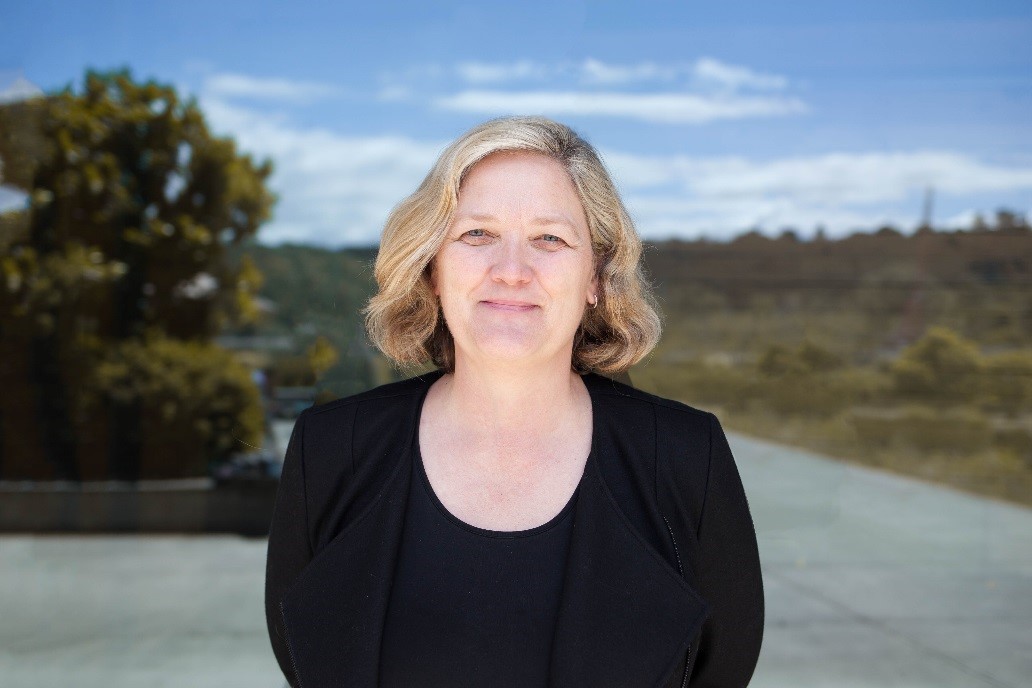Karin (Kari) Nelson
Welcome to Collective Conversations, a series of discussions aimed at highlighting people and groups working to improve health through better health care systems.
Listen to Dr. Kari Nelson, Director of the Primary Care Analytics Team (PCAT) for the VHA’s Office of Primary Care and her experience implementing the Learning Health Systems model.
Joy Lee: You currently serve as the Director of the Primary Care Analytics Team (PCAT) for the Veterans Health Administration Office of Primary Care. How did you get into this role?
Kari Nelson: I initially started out working under Steve Finn, who was a previous physician researcher at the VA. And we were charged with evaluating the patient center medical home initiative at the VA, and that was about 10 years ago. And then, I took over for the analytics team in 2018 and sort of redeveloped the mission and the vision for the team at that point, which is beyond the initial evaluation for the medical home model.
JL: For those who are unfamiliar with the concept of “Learning Health Systems” or what is looks like in practice, can you say more about it and how PCAT exemplifies this through its core functions?
KN: Really, the “Learning Health Systems” model is one where you systematically integrate internal data, clinical experience with external evidence. And then you try to put that resulting knowledge into practice. And I think where PCAT really tries to put the knowledge into practice is we work really closely with operational leadership and the VA to really try to provide the best evidence that we can to operational leaders about improving primary care for veteran patients. And that’s really our vision for PCAT. And then within that, we have a lot of different functions.
To try to obtain that vision and how we structure our work, we do a lot of program evaluation, program planning; we develop new measures and databases; and also do a lot of evidence synthesis for the Office of Primary Care. And really, our projects fit within the strategic priority areas of the office which are fidelity to a team-based model. The second priority area is high-risk patient care. And then the third priority area is virtual care. So, that is kind of how we envision our work within the Learning Health System.
JL: Well, one, it sounds like there’s never a boring day. It’s amazing that you all have taken on so much and how it syncs up with the priorities as well. It sounds like a national scale, is that right?
KN: So, the VA has over 5 million veterans in primary care across the national system of over 1000 clinics. So, we do work within that space.
JL: How are projects prioritized and can you share some of the current ones you’re working on?
KN: Within each of those main priority areas, we have a lot of different subprojects. Within the team-based care domain, the priorities right now are for measuring primary care productivity, so we have a lot of work in that area. The other main topic area is trying to figure out appropriate team-based care staffing models for primary care – how can you delegate different clinical tasks to different team members. And then our third main project within team-based care is we have a provider survey and a staff survey to try to understand provider and staff experience and burnout from a field-based survey. So, those are our three main priority areas this year within that team-based care model.
We also have virtual care (telemedicine is a big topic) – we are doing an evaluation of a regional telemedicine hub program the VA initiated a few years ago and we are in charge of the 5-year evaluation for that. And then, we also do a lot of work around high-risk patients. And we have a high-risk investigator network that we sponsor and run. So, those are our main priority areas.
JL: Again, that sounds like a great amount of work, but also very rewarding and so interesting to be able to go through that data on your team. And given the span of those projects that you all can really paint a pretty broad picture with each one of those subprojects.
KN: Yeah, and we have a pretty large network of investigators throughout the VA and also we have a team of about 10-12 (depending on whom we’re counting) program managers and analytic staff with a lot of data science and statistical experience. A lot of data programmers in our team.
JL: Looking forward, what are growth opportunity areas, or areas in which PCAT might evolve in this next phase?
KN: Well, so, the VA is organized into these regional networks called VISNs. So, the way that the VA is funded is the funding flows through the VISN leadership. And so, one of the things is figuring out how to actually influence the VISN leadership in terms of what we’re doing. And I think that would be a growth opportunity. Right now, we are primarily interacting with the policy arm of the VA and not so much the operational arm in terms of primary care. So that’s one thing.
We also have a local innovations lab and I think there’s growth there. It’s a randomized QI lab where we’re testing clinic-based interventions. There’s a real big opportunity there to grow that group.
JL: What are 2-3 lessons that PCAT can offer others who want to do LHS work, but are in non-VA systems?
KN: I think a lot of people think that the VA is such a unicorn or something, but I do feel like there is a lot of what we do that can be applicable to other systems. I think the main lesson is the ability to have meaningful relationships with people who run health systems is critical. So, you cannot do learning health system work if you don’t have operational partners who want to be part of your group. So, that’s one thing – you really need to develop trusting relationships with the people who run systems, and that takes a lot of time. And the way we structured our group is that we really have ongoing, frequent bidirectional contact between our team and operational leaders. So, I think that’s applicable to other systems.
We really have a shared governance between our team and the primary care political leaders. We have a scientific advisory board that oversees what we are doing. And I think that’s also critical. Another strategy that we’ve used is to develop really short evidence briefs to help communicate evidence to leaders who are incredibly busy. So, that’s another mechanism that could be used at teams that are not in the VA. But I would say the number one thing is having organizational and leadership support – if you don’t have that, then it’s really hard to make anything work at all. You can’t influence people without having them be a part of the conversation.
JL: I’d like to zoom out a bit but with focus now on the Veteran perspective. Do you hear back from Veterans in ways that inform your work? Or do you have ideas of ways in which you’d like to hear more of their perspectives to inform your work?
KN: I’m a practicing primary care physician. So, I feel like most of the things I work on are really applicable to me as a practitioner. But we do have more formal mechanisms to get Veteran feedback. The grants that we are involved in: most of them are reviewed by a Veteran advisory group to give us feedback on the actual research projects like the one for the productivity grant that we got that was based on some PCAT work that we got some interesting feedback from veterans about that. So, there are sort of informal and formal mechanisms from the Veteran perspective.
The other Veteran perspective that we work on a lot is that the VA does a national SHEP (Survey and Healthcare Experiences of Patients) – it’s a national patient experience survey that goes out to a subsample of veterans from each clinic visit. And we use that data a lot in our work looking at veteran perspective of care and quality of care.
JL: Is there anything else you’d like to mention before I let you go?
KN: I really appreciate the opportunity to talk to you guys.
JL: Thank you so much for your time and we really appreciate you being here.




